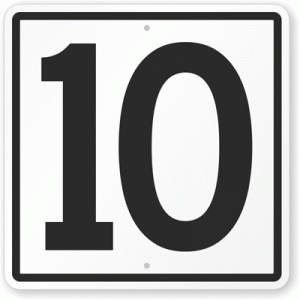Myths and Facts About SEO Revealed
With so much information out there about SEO, it’s easy to get overwhelmed. In fact, sometimes a little bit of knowledge can be dangerous, as people can wind up falling prey to some common misconceptions about SEO. eVisible would like to clear up some of the myths that we see many website owners have that can cause major problems with their online marketing strategies:
Myth: Link Building is Dead. Many people have become confused because Google has recently penalized websites that attempt to buy their way to a high volume of links. This is different than organic link building, which is what happens when links come to a site in a “natural” matter. This type of link building is still very valid and can have a very positive impact on your SEO. There’s a great value in working with a company such as eVisible that can create an organic link building campaign that stays within Google’s parameters.
Myth: Social Media Has Replaced Link Building. With the exception of Google+, the opposite is true. Because social networks such as Facebook and Twitter don’t share information with Google, Google doesn’t factor social links into their SERP.
Myth: Search Result Positions Don’t Matter. It’s true that it’s harder than ever to determine a true search engine “ranking” because factors such as geolocation and personalization mean that people’s search results are different. But there’s still a major difference between being first on a page or tenth. And there’s a huge gap between being on the first page of results or not.
Myth: Google Is Spying On You. Google isn’t the government. While they use Google Analytics to determine if you are doing something against their “rules” (such as creating multiple domains for links), they don’t use Analytics as part of their site rankings.
Myth: All You Need for a High Ranking Site Is Content. The message that “content is king” has been twisted by some people who now believe that you don’t need to do SEO work in order to rank highly. The reality is that without the proper SEO features, your great content will just sit there unread.
So what are the things that you need to pay attention to in order for your SEO campaign to work today? In many ways, some of the same things that have always worked:
Authorship: Make sure that your blog posts, articles and other content are linked to your Google+ profile. You also want to make sure that your business information is featured every time you post content.
Content: Don’t post thin content or content that strays from specific topics. Anything that comes off as too “salesy” might get punished by Google.
Alt Tags: Use alt tags for your images and other places in your content.
Robots.txt: If your robots.txt file is blocking Google from crawling your site, you simply won’t rank.
Page Speed: Faster page speeds matter to Google and to your customers, especially if they are viewing your site on a mobile device.
URLs: Having site URLs be relative in your code doesn’t help you. Instead, make them absolute along with being short and free of multiple query parameters.
Penalties: If you are penalized by Google, you need professional help to determine the problems and the solutions to get you out of “Google jail.”
 Posted on July 22, 2014
Posted on July 22, 2014

 Posted on June 3, 2014
Posted on June 3, 2014
 Posted on March 20, 2014
Posted on March 20, 2014
 Posted on February 20, 2014
Posted on February 20, 2014 Posted on February 18, 2014
Posted on February 18, 2014
 Posted on February 5, 2014
Posted on February 5, 2014
 Posted on January 6, 2014
Posted on January 6, 2014